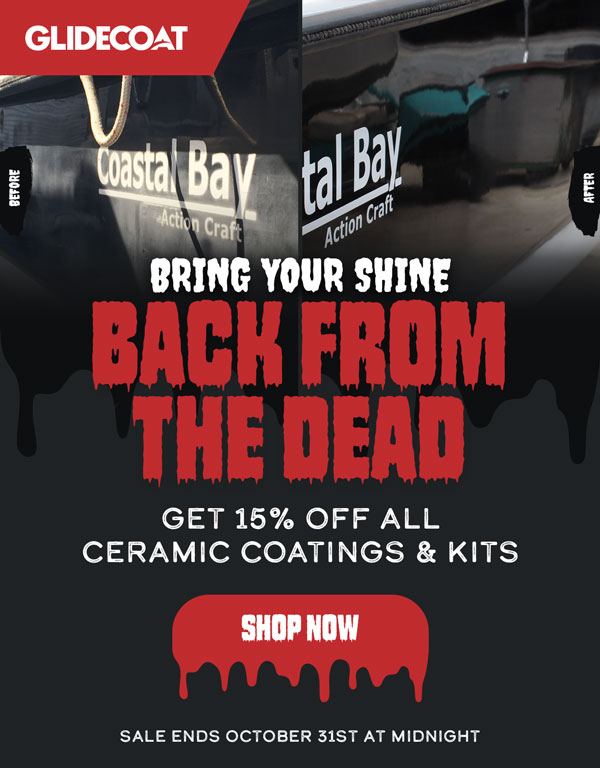Are you interested to learn more about ceramic coatings for your boat? In the video, we walk through the application process and share the before and after photos on a number of boats with Glidecoat ceramic coating.
Products used:
- Marine Ceramic Top Coating Kit
- Nano Wash
- Nano Compound
- Nano Polish
- Surface Wipe
- Marine Ceramic Coating
- Inflatable Ceramic Coating
- Application Sponges
- Microfiber Towels
Video Transcript
Speaker:
Hi, this is Kyle Westhorpe with Glidecoat and in this video, we're going to walk through the Glidecoat Ceramic Coating application steps and providing you with the before and after photos. The first step of the application process is washing down the boat to safely remove any dirt, oils, salt build-up from the surface. Then buffing the surface with our nano compound. This is a medium cut compound. We're using a wool pad and the Makita to help remove the oxidization from the surface. Then going back over it with the polish. The polish helps get those light swirls, water spots, and boosting the shine of the surface.
The next step is using the Surface Wipe. Surface Wipe removes all polishes and residues, essentially acting as a cleaner before the ceramic coating is hand applied. So you're going to hand apply it at about 3' by 3' sections. You're going to make sure that the entire area that you're working is saturated with the coating and then, going back over it with a clean microfiber cloth, to make sure all of the coating, the excess coating is removed. You're going to repeat that process twice on the surface.
Here are Glidecoat, we have a range of products for the marine industry. We have a specific product for inflatables. We do have products, as you'll see throughout the most of this video is from the water line up. So in these instances, a lot of it you're going to see is the hulls, varying different colors, sizes of boats that have been applied.
Common questions that a lot of boat owners ask is, is this can it be applied to paint? So Awlgrip or Awlcraft? And also, can it be applied to gel coat? The answer is yes! It can be applied to both surfaces to help seal in the pores on both paint and gel coat.
Also another question that we get is - this was a 25 year old boat that Edgewater that just went up - and a common question that we get is - is it just a restoration product or can I apply it to a brand new boat? And you can do it to both! The only difference that you really see is just how much restoration steps go into those older boats. So the Edgewater, like you saw previously, will have to buff and restore that surface multiple times. Whereas the 66' Azimuth, the restoration steps, considering it was only a year old boat, the restoration steps are much less. You can apply the coating which will protect the surface going forward. An even better time to do it is when you just recently get a brand new boat, so it hasn't been exposed to any of the elements. You can put the coating on there to help protect it going forward and making sure that you're not getting any signs of oxidization
With this Ranger here, you can see the damage that you can get to those colored hulls here in South Florida. That is the biggest advantage to what you would see with a ceramic coating compared to a wax. A lot of these boats that are shown here, have come from the normal strategy of getting a boat buffed and waxed every six months. And as we know, here in South Florida, especially on colored hulls, that is just not sufficient and not protection. That is why you're starting to see these ceramic coatings really become popular within the industry.
The other thing that we use as well, as you can see there, is the glossmeter. The Glossmeter gives us a reading of the shine off of the surface. That 90.0 (GU) there is actually reading better than what you would get out of factory new.
So we hope you find this video informative. If you have any questions about the advantages of ceramic coatings, we welcome you to check out our website as we have a tremendous amount of case studies and our team here at Glidecoat can help address any questions that you may have.




